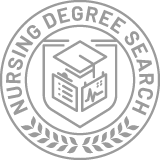Rhode Island Nursing Colleges
Rhode Island ranked #44 in the nation for nursing degrees handed out in 2021. Around 1,091 students received some type of diploma that year. Students who live in the state can take advantage of in-state tuition averaging $21,772 a year, while students from out-of-state may pay a higher average tuition of $30,534 a year.
An estimated 56% of college students in Rhode Island take out loans, with the average loan amount being $8,574 per year.
Featured schools near , edit
Most Popular Nursing Schools in Rhode Island
Learn more about the most popular schools below:
The total student population at University of Rhode Island is 17,649, of which 14,904 students are undergraduates and of those, 12,712 are full-time. For undergraduates at URI, the average graduation time is 4.3 years.
Roughly 63% of students at URI take out loans to pay for college. The typical student loan amount is $11,356 a year.
The early-career average earnings of bachelor’s-degree holders from URI is $57,446.
Request Information
There are 5,821 full-time undergraduates at CCRI, and 13,684 students altogether. The school has a student-to-faculty ratio of 17 to 1.
Approximately 3% of the students who attend this school take out loans. The average amount of student loans is $3,792 a year.
A typical bachelor’s-degree holder from this school earns an average of $33,476 during the early-career years.
Request Information
The total student population at Rhode Island College is 7,072, of which 5,998 students are undergraduates and of those, 4,611 are full-time. The average graduation time for an undergraduate student at RIC is 4.7 years.
Approximately 57% of the students who attend this school take out loans. The typical student loan amount is $7,110 a year.
Students who graduate from RIC with a bachelor’s degree make an average of $46,882 during the early years of their career after graduation.
Request Information
There are 2,031 students at New England Tech in total, 1,843 of which are undergraduates, and of those, 1,579 are full-time. The school has a student-to-faculty ratio of 12 to 1.
Roughly 80% of students at New England Tech take out loans to pay for college. The typical student loan amount is $9,159 a year.
The early-career average earnings of bachelor’s-degree holders from New England Tech is $44,363.
Request Information
There are 2,150 undergraduates at Salve Regina, of which 2,084 are full-time, and there are 2,771 students altogether. For undergraduates at Salve Regina, the average graduation time is 4.1 years.
Roughly 75% of students at Salve Regina take out loans to pay for college. The average amount of student loans is $11,453 a year.
The early-career average earnings of bachelor’s-degree holders from Salve Regina is $55,027.
Request InformationReferences
More about our data sources and methodologies.





